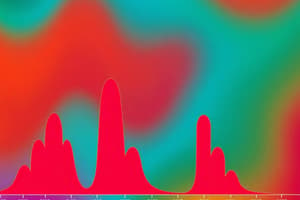Podcast
Questions and Answers
What is the formula to calculate range?
What is the formula to calculate range?
- Accumulated frequency / Number of classes
- Highest value - Lowest value (correct)
- Class width * Class midpoint
- Total number of observations / Number of classes
In a frequency distribution, what does the class width represent?
In a frequency distribution, what does the class width represent?
- The gap between the lower and upper class limits (correct)
- The sum of all frequencies
- The range of the data
- The total number of observations
What does the less than cumulative frequency (LCF) indicate in a class?
What does the less than cumulative frequency (LCF) indicate in a class?
- Frequency less than the lower limit (correct)
- Frequency less than the upper limit
- Total frequency in the class
- Frequency greater than the lower limit
How can you calculate relative frequency in a class?
How can you calculate relative frequency in a class?
What does the greater than cumulative frequency (GCF) represent in a class?
What does the greater than cumulative frequency (GCF) represent in a class?
What is the range of the given data set?
What is the range of the given data set?
How many classes were determined for the data set?
How many classes were determined for the data set?
What is the class width for the data set?
What is the class width for the data set?
In which class does the frequency equal 5?
In which class does the frequency equal 5?
What percentage of observations fall within the class 35-44?
What percentage of observations fall within the class 35-44?
Study Notes
Calculating Range and Understanding Frequency Distributions
- The formula to calculate range is: Range = Maximum Value - Minimum Value.
Understanding Class Width and Frequency
- In a frequency distribution, the class width represents the difference between the upper and lower boundaries of a class interval.
Cumulative Frequencies
- The Less Than Cumulative Frequency (LCF) in a class indicates the total frequency of all values less than the upper boundary of that class.
- The Greater Than Cumulative Frequency (GCF) in a class represents the total frequency of all values greater than or equal to the lower boundary of that class.
Calculating Relative Frequency
- To calculate relative frequency in a class, divide the frequency of that class by the total number of observations, then multiply by 100.
Data Set Characteristics
- The range of the given data set is calculated using the maximum and minimum values.
- The data set was divided into a certain number of classes (not specified).
- The class width for the data set is used to create the class intervals.
Class Intervals and Frequencies
- In one of the classes, the frequency equals 5 (not specified which class).
- A certain percentage of observations (not specified) fall within the class 35-44.
Studying That Suits You
Use AI to generate personalized quizzes and flashcards to suit your learning preferences.
Description
Test your knowledge on organizing data, sample size, range, number of classes, class width, class midpoint, and cumulative frequency calculations. This quiz will help you practice key concepts related to data organization and frequency distribution.




